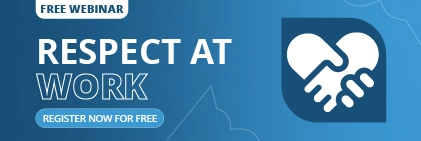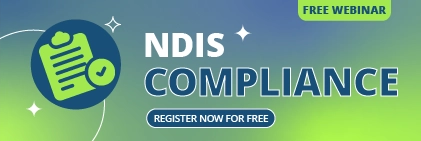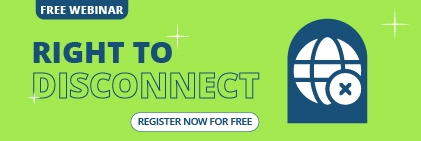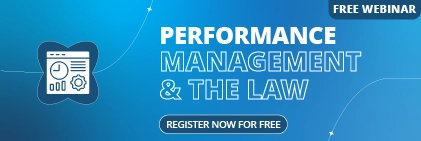Running a startup in Australia is a vast undertaking. You’re building a business from the ground up, managing tight budgets, and trying to motivate your team. While handling all of that, you still need to keep an eye on growth. If you have fewer than 20 staff members, HR might feel like a luxury you can’t afford. But here’s the truth: human resources software isn’t just for corporate giants. It’s a saviour for small businesses, helping you save time, stay compliant, and keep your team happy without breaking the bank.
We’ll walk you through why affordable HR solutions for Australian startups are essential, what features to prioritise, and how to pick the right one for your team. We’ll spotlight tools like Sentrient, a fantastic option for small Australian businesses of all shapes and sizes, and share practical tips to make implementation a breeze. Whether you’re an HR manager or a business owner juggling multiple roles, this post is for you. Let’s explore how HR software for small Australian startups can transform your operations.
Why HR Software is Essential for Startups with Under 20 Staff
Think HR software is overkill for a small team? Think again. For startups under 20 employees, it’s a secret weapon that tackles tedious, manual tasks, ensures legal compliance, and boosts morale. Here’s why it’s a must-have.
Saving Time on HR Tasks
Manual HR processes can chew up hours you don’t have. This can include calculating payroll or tracking leave, two everyday tasks for any business. HR software for small businesses in Australia automates these jobs, cutting down errors and giving you back time to focus on growth. Take a typical startup with 12 staff, for example. Businesses can use HR software to reduce payroll processing from hours to minutes each week. That’s a massive win for a lean team. The hours you save can be used to grow your business and take on client projects, giving you an edge over competitors.
Staying Compliant with Australian Laws
Australian employment laws are a minefield. There are many of them, and it can be tough to track them all. Superannuation, Fair Work rules, and tax obligations can trip you up quickly. Miss a deadline, and you’re facing fines. Human resources software handles compliance automatically, tracking super payments and generating ATO-ready reports. It’s like having a legal expert on speed dial, minus the hefty fees. This helps improve your employees’ trust in the business, and they can get on with their work, confident that they’re being treated properly.
Boosting Employee Happiness
Happy employees stick around, and in a small team, every person counts. Employee management software offers self-service portals where staff can manage their details, request time off, or check payslips. This cuts your admin workload and empowers your team, showing them you’re invested in their experience.
Key Benefits:
- Automates payroll and leave tracking.
- Keeps you compliant with Australian regulations.
- Improves team morale with self-service tools.
- HR software for startups is a necessity that pays off fast; it’s not just a luxury.
Key Features to Look for in HR Software
Not all HR software is created equal, especially for small teams. Focus on these must-have features to get the most bang for your buck. Prioritise features you know your business will use, rather than going straight for flashy features designed to attract your attention rather than improve your operations.
Payroll Management
Payroll in Australia means juggling super, taxes, and payslips. Look for payroll management software for startups that automates calculations and integrates with the ATO. It’s a time-saver and a compliance lifesaver. Third-party tools often handle payroll management, and moving away from established systems can be a pain. Software that integrates your payroll management and HR management saves a lot of headaches in the long run.
Employee Self-Service
A self-service portal lets your team update their info or request leave without pinging you. Employee self-service HR tools reduce your workload and give staff more autonomy. It’s a win-win for everyone. It’s even better if your team has mobile access. Work from home (WFH) is a huge movement since the pandemic, and letting your employees manage themselves in a startup will make you more efficient than you’d initially expect.
Leave and Attendance Tracking
Say goodbye to messy spreadsheets. Real-time leave tracking software for small businesses keeps tabs on balances and attendance, making scheduling a breeze. This software consolidates all your information in an easily digestible report, allowing you to track key statistics and KPIs with ease. Identifying your key strengths and weaknesses gets easier as you integrate an effective HR management system into your business’s core operations.
Performance Management
Small teams need growth, too. Tools for reviews, goal setting, and feedback keep everyone aligned and improving, even with limited resources. Tools that enable the use of the S.M.A.R.T. goal framework are a straightforward approach to handling future expectations of individual employees and broader company projects. Startups in Australia’s early stages need clearly defined goals to manage their performance to their advantage.
Recruitment and Onboarding
As you grow, hiring becomes critical. Talent management software with job posting and onboarding features streamlines the process and is tailored to Australian norms.
Must-Have Features Checklist:
- Automated payroll with ATO integration.
- Self-service portal for employees.
- Real-time leave and attendance tracking.
- Performance review and goal-setting tools.
- Recruitment and onboarding support.
These features ensure your human resources software meets your startup’s unique needs.
How to Choose the Right HR Software
With so many options, picking the right HR software for small Australian businesses can feel daunting. Follow this simple process to nail it on the head.
Step 1: Assess Your Needs
What’s your biggest HR headache? Payroll? Compliance? List your priorities to focus your search. This needs to be in the context of your business and industry; otherwise, it won’t apply to you. Look at your priorities in terms of how essential they are for your future growth, and describe and list them accordingly.
Step 2: Set a Budget
Startups run lean, so look for affordable HR software. The best software charges the user monthly, which is perfect for startups as they tend to have fewer people than traditional, established corporations. Triple-check to avoid hidden fees that could bite you, and check for scalability options to account for future growth.
Step 3: Check Australian Compliance
Ensure the software handles super, tax, and Fair Work regulations. Ask for proof it’s built for Australia. One of the best ways to check this is to try a demo and see for yourself. You must choose an Australian vendor, as they’ll be able to cater to your specific needs. Not only that, but you’ll also have support when you need it.
Step 4: Test the Interface
Clunky software gathers dust. Try demos to find intuitive software that your team will actually use. When testing the software, keep in mind that the demo is designed to show it at its best. Look for the key details that impact your business, and talk to the vendor about any concerns.
Step 5: Read Reviews
Check what other businesses that use the HR software say. Look for businesses in your industry, and see how they’ve fared with the software solution.
Selection Tips:
- Pinpoint your top HR pain points.
- Stick to a budget of $5-$10 per employee.
- Verify Australian compliance features.
- Prioritise user-friendly design.
- Lean on local reviews for insight.
- This approach guarantees you find the perfect fit.
Top Affordable HR Software Option for Australian Startups
Let’s look at a standout HR software solution for small Australian teams. Sentrient is built for Australia, offering payroll, compliance, and training at a budget-friendly price. Its local focus makes it ideal for startups with under 20 staff. It includes features available for all businesses and industries, and is one of the best vendors in the country for startups.
Implementing HR Software: Tips for Success
Choosing software is half the battle. Implementation seals the deal. Here’s how to roll it out smoothly.
Plan Ahead
Set a timeline and assign roles. Use vendor support to your fullest advantage. Many offer free onboarding help or training for your managers and leadership team.
Train Your Team
Invest in training with tutorials or live sessions. Comfort drives adoption. Online webinars and other free online resources are often a great tool for your team. This is great, not to strain your startup’s resources.
Monitor and Tweak
Post-launch, gather feedback and adjust workflows. Human resources information systems thrive on fine-tuning.
Implementation Essentials:
- Create a clear rollout plan.
- Train everyone thoroughly.
- Check in and optimise after launch.
Conclusion
For Australian startups with under 20 staff, affordable human resources software is a huge time saver. It saves time, keeps you compliant, and lifts team morale. We have you covered from must-have features like payroll and self-service to top picks like Sentrient. Follow our steps to choose and implement the right tool, and you’ll free up energy to grow your business.
Ready to simplify HR? Start with a demo from Sentrient. Your startup deserves it.
Frequently Asked Questions
1. What’s the best HR software for Australian startups?
Sentrient leads with affordability and Australian-specific compliance tools and is perfect for teams under 20. With local support, it’s ideal for startups needing reliable HR software. Its tailored features help small Australian businesses manage HR efficiently and stay compliant.
2. How much does HR software cost for small businesses?
Typically, HR software costs a fixed amount per employee per month, and affordable solutions are suited to startups. Many providers offer free trials, making it easy to test before committing.
3. How does HR software help with compliance?
It automates superannuation, tax withholdings, and Fair Work regulations, minimising errors and fines. By streamlining compliance tasks, HR software saves time and reduces legal risks. Startups benefit from built-in updates that align with Australian laws, allowing them to focus on growth instead of worrying about regulatory headaches.
4. Can small teams use cloud-based HR software?
Yes, cloud-based HR software is perfect for small teams. It’s flexible, accessible anywhere, and requires no hardware setup. As your business grows, it scales effortlessly, making it a practical, long-term solution for small teams.
5. How long does it take to implement HR software?
Implementation takes a few days to weeks, depending on team size and HR process complexity. Proper planning and vendor support speed things up. Most providers offer onboarding assistance, helping and aiding startups adopt the software quickly and efficiently for immediate benefits.
6. What features are most important for startups?
Payroll automation, employee self-service, and leave tracking are critical for startups. These features save time, cut admin work, and keep teams organised. Look for extras like performance management to support growth and streamline HR tasks effectively.
7. Does HR software integrate with other tools?
Many HR solutions sync with accounting, payroll, and workforce management platforms. This integration streamlines operations by connecting data across systems. It reduces manual entry errors and boosts efficiency for growing startups.
8. How do I handle team resistance to new software?
Show the benefits of the software. This can include less paperwork and easier access to information. These are the things that win over your team. Provide hands-on training and support to build confidence. A collaborative approach makes adopting new HR software smoother, ensuring everyone adapts quickly.
9. Is data security a concern with HR software?
Reputable HR tools use encryption and meet Australian privacy standards, addressing security concerns. Look for features like two-factor authentication and regular backups. Always review security certifications to ensure your startup’s sensitive information remains protected.
10. Can HR software help with hiring?
Yes, HR software with recruitment and onboarding features simplifies hiring. It lets you post jobs, track applicants, and streamline processes. Efficient hiring tools help you grow quickly, keeping your focus on building the business.
Read More About HR Management:
- The Ultimate Selection Checklist for Purchasing HR Software for Australian Companies
- 5 Must-Have HR Software Features For Australian Small Businesses
- How To Choose The Best HR Software In Australia For Award Interpretation And Super Compliance
- The Fundamentals of Human Capital Management Explained
- Understanding Employee Offboarding: What It Is and Why It Matters





